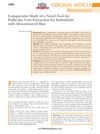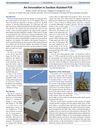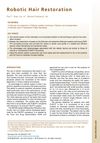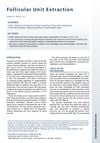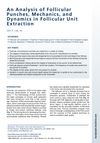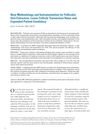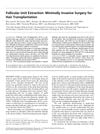Innovations Hair Restoration Surgeons Have Made to Adapt to the Challenges of Follicular Unit Excision
May 2020
in “
Journal of Cosmetic Dermatology
”
follicular unit excision FUE hair transplantation hair follicle transection sharp punches depth control blunt rotating punches flared punch hybrid punch edge out punch motorized devices rotation roto-oscillation oscillation vibration suction hydration robotic ARTAS device follicular exit follicular unit structure epidermal surface ARTAS

TLDR Hair restoration surgeons have improved follicular unit excision (hair transplant method) by using innovative tools and techniques, reducing hair damage and increasing success rates.
In 2020, a review was conducted on the innovations made by hair restoration surgeons to adapt to the challenges of follicular unit excision (FUE), a method of hair transplantation. The study found that early use of FUE was limited due to high rates of hair follicle transection, but innovative methods, punch shapes, and devices have successfully minimized this rate. These methods include the use of sharp punches with depth control, blunt rotating punches, and punch shapes such as flared, hybrid, and edge out. The development of motorized devices using features including rotation, roto-oscillation, oscillation, vibration, suction, and hydration have also aided in achieving more successful graft excision. The review also discussed the robotic ARTAS device, which calculates the angle of variance between the follicular exit and the follicular unit structure underneath the epidermal surface. The choice of the FUE system is dependent on several factors including the hair characteristics of the patient, physician preference and experience, long hair vs shaven donor area, robotic vs non-robotic, price, availability, and technical support.
